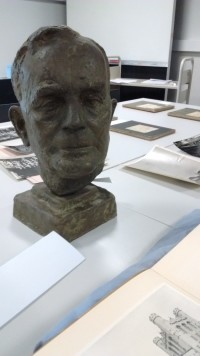Tag archives: history of physics
Discover why the philosophy of physics is vital

Think about it: Robert P Crease’s new short-form Physics World Discovery ebook is now available to read for free
By Matin Durrani
Avid readers of Physics World will know that we have for many years published a monthly column called “Critical Point” written by Robert P Crease, a historian and philosopher of science from Stony Brook University in New York, in which he examines the interface between physics and the wider culture.
I’ve always felt Crease’s work is interesting but I’m aware that many physicists scoff at the notion of philosophers trying to understand how science works. It’s a waste of time, right?
Following a meal at a vegetarian restaurant round the corner from his apartment in Manhattan earlier this year, I managed to persuade Crease to write one of our new, short-form ebooks that go under the the Physics World Discovery banner. My challenge was for him to explain to physicists just what it is philosophers of physics do – and why their work is important.
You can read Crease’s book Philosophy of Physics, which has just been published, for free in either epub, Kindle or PDF formats via this link. To whet your appetite, Crease has answered some questions about his approach to philosophy and why the book is worth reading. Don’t forget there are plenty of other books in the Physics World Discovery series, ranging from multimessenger astronomy to quantitative finance.
View all posts by this author | View this author's profile
RIKEN celebrates its centenary
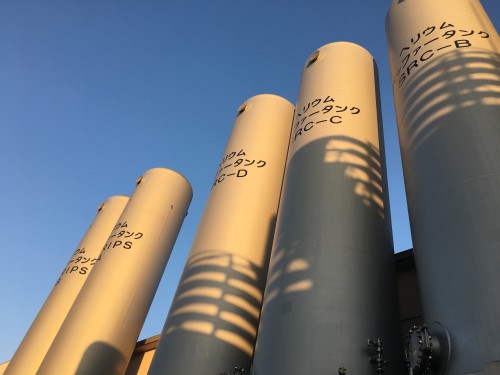
Cool stuff: these liquid-helium tanks are used to chill the superconducting magnets at RIKEN’s accelerators in its Radioactive Ion Beam Facility. (Courtesy: Matin Durrani)
By Matin Durrani in Wako, Japan
It’s funny where chance encounters can lead.
Earlier this year, I was at a reception for science journalists at the Fenway Park baseball stadium in Boston, US, when I bumped into Jens Wilkinson, who works in the communications team at RIKEN – one of Japan’s biggest research institutions. He encouraged me to visit the lab, which was founded 100 years ago, should I ever find myself in Japan.
And so here I was at RIKEN’s headquarters in Wako, just north of Tokyo, on day two of my trip to gather material for the upcoming Physics World special report on Japan. Wako is home to the largest of RIKEN’s seven campuses, which together employ almost 2000 researchers.
Apart from celebrating its centenary this year, which included an event in downtown Tokyo with none other than Emperor Akihito, RIKEN has been in the news for its discovery of element 113. Created at the RIKEN Nishina Center for Accelerator-Based Sciemce by smashing zinc nuclei into a bismuth target, the element was last year officially named “nihonium” (Nh).
View all posts by this author | View this author's profile
Quantum quartet is on the cards

Quantum pair: Wolfgang Pauli and Werner Heisenberg (Courtesy: Sabine Hossenfelder)
By Hamish Johnston
Theoretical physicist and blogger Sabine Hossenfelder has created a lovely set of cards featuring pioneering quantum physicists. You can see my two favourites above.
Resembling football or baseball cards, they each feature a portrait plus a fact or two about the physicist – including a salacious aspect of Erwin Schrödinger’s personal life. You will have go to Hossenfelder’s blog to learn more about that – and see the rest of the cards, including a feline “Bra-ket” as the joker of the deck.
View all posts by this author | View this author's profile
In the footsteps of Cecil Powell
By Matin Durrani
I spent yesterday at the University of Bristol, where a meeting was held to celebrate the 70th anniversary of the discovery of the pion in 1947.
The particle was spotted by Cecil Powell, who joined the university’s physics department in 1928 and went on to win the 1950 Nobel Prize for Physics for his efforts.
At the time, the pion was thought to be the carrier of the strong nuclear force, which binds protons and neutrons in the nucleus, though we now know it is one of a family of strongly interacting mesons.
As we heard yesterday from introductory speaker Brian Pollard, Powell found evidence for the pion using a series of ingenious (and literally breathtaking) experiments that involved him taking specially manufactured photographic plates to high altitudes up the Pic-du-Midi mountain in the Pyrenees.
View all posts by this author | View this author's profile
Primal colours across the spectrum, impossible space engines
By Tushna Commissariat
Physicists and artists have long been intrigued and drawn in by the various mysteries that light and its many colours offer. In the latest installation to be unveiled at the Natural History Museum in London, artist Liz West has unveiled her stunning new work dubbed Our Spectral Vision. The exhibit aims to delve into the long and complex history of the development of colour and vision “through the eyes of nature”. Our regular readers will recall the many physics papers that look into the same, from the structural colour of butterflies to the nanostructures in avian eggshells to the mantis shrimp’s visual superpowers. West’s exhibit deals with many of these topics and more including some fantastic “350 rarely seen specimens, from beautiful birds to fossils of the first organisms with eyes”. If you are based in the UK, do visit the exhibit and otherwise, take a look at the video above to see through West’s eyes.
View all posts by this author | View this author's profile
Spiralling temperatures, physics legacies, the science of mac and cheese
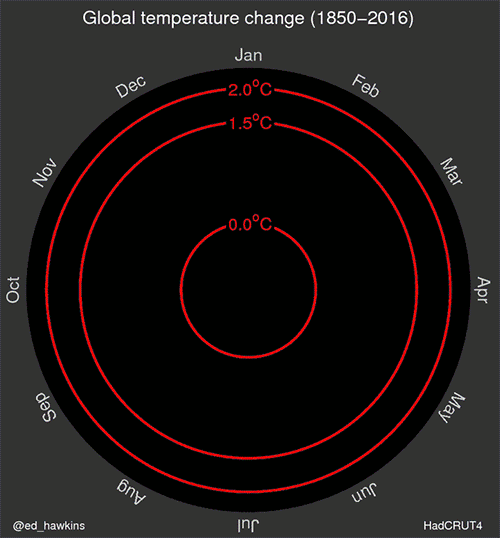
Ring of fire: spiralling global temperatures. Created by climate scientist Ed Hawkins of the University of Reading.
By Tushna Commissariat
As we face up to the realities of global warming and see the effects of climate change become apparent, it’s more important than ever that people the world over truly grasp its impact. With this in mind, University of Reading climate scientist Ed Hawkins has created the above animated spiral, which shows how the global temperature has changed over the past 166 years. Using data from the Met Office’s Hadley Centre observations datasets, Hawkins’ animation presents data in a a clear and artistic way. “The pace of change is immediately obvious, especially over the past few decades. The relationship between current global temperatures and the internationally discussed target limits are also clear without much complex interpretation needed,” says Hawkins, who is based at the university’s National Centre for Atmospheric Science. Take a look at his webpage to learn more about the project and for a list of specific weather events that are noticeable in the data.
View all posts by this author | View this author's profile
Steven Weinberg defends his ‘Whig’ view of history
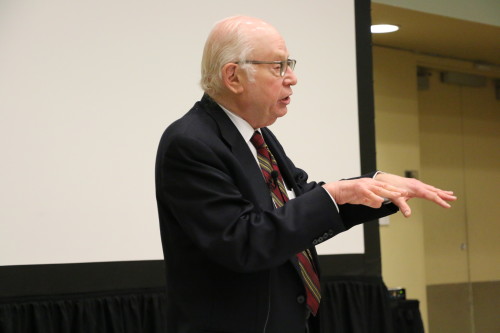
Steven Weinberg in full flow discussing his view of the history of physics.
By Matin Durrani in Baltimore, Maryland, US
I wasn’t planning on blogging about the talk that the Nobel-prize-winning physicist Steven Weinberg gave yesterday afternoon here at the APS March meeting. He’d been speaking about his recent book To Explain the World: the Discovery of Modern Science, which examines the history of physics from the ancient Greeks to the present day.
The book ruffled a fair few feathers when it was published last year, with historians and philosophers annoyed at Weinberg’s approach to history, which basically involves judging the past from the standpoint of the present. It’s known as the “Whig interpretation” of history and sees past events as a march towards enlightenment, ignoring dead-ends and blind alleys. It’s the history of winners, if you like.
I have probably mis-stated the criticisms of Weinberg book – I’m no historian – and that’s my point. I felt the arguments against his approach were too subtle and nuanced to fit in a blog. But I changed my mind this morning about covering the session Weinberg appeared in. Not only because the room where Weinberg gave his talk was full to bursting, with about 500 people present, but also because some of the things he said, which I Tweeted yesterday, were proving popular on Twitter. Clearly, people want to hear what Weinberg says – he’s a master of the soundbite – so here, for posterity, are a few of his thoughts.
Would you encourage your grandchildren into condensed-matter physics?
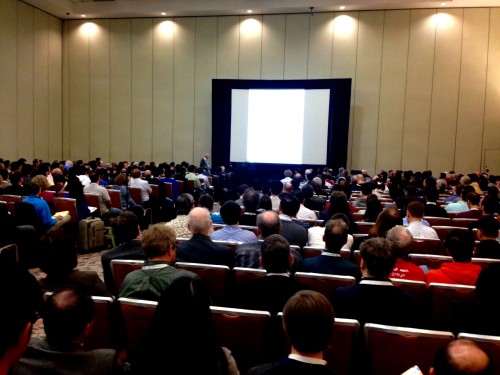
Packed in: a full room for Anthony Leggett’s talk. (Courtesy: Tushna Commissariat)
By Tushna Commissariat in Baltimore, Maryland, US
One of the most popular talks this morning at the APS March meeting was almost certainly given by Nobel-prize-winning physicist Anthony Leggett of the University of Illinois at Urbana-Champaign in the US. Leggett, who shared the 2003 Nobel Prize for Physics for his work on superconductors and superfluids, talked about his “Reflections on the past present and future of of condensed-matter physics”.
As the abstract of his talk suggests, Leggett looked at the ways, means and even the very definition of “condensed-matter physics” has changed and “evolved since its inception in the early 20th century, with particular reference to its relationship to neighbouring and even distant disciplines”. He went on to “speculate on some possible directions in which the discipline may develop over the next few decades, emphasizing that there are still some very basic questions to which we currently have no satisfactory answers”.
I missed the beginning of his talk as I was attending the morning’s first set of press briefings (more on those later) but when I did walk into the packed hall for his talk, his slide had the rather interesting title: “Would I encourage my grandchildren to go into condensed-matter physics?” Happlily enough, his answer at the end of his talk was a resounding “yes”.
The February 2016 issue of Physics World is now out
By Matin Durrani
Welcome to the February 2016 issue of Physics World magazine.
As I explain in the video above, this month we have a package of articles looking at some of the issues surrounding peer review, including a news-analysis piece by Physics World news editor Michael Banks, who talks to a range of figures in physics and publishing with views on this subject.
Our cover feature this month is on the new interdisciplinary science of “network physiology”. Elsewhere in the issue, John Campbell from the University of Canterbury in New Zealand looks at Rutherford’s secret work in the First World War using sonar to spot submarines, while science writer Matthew Francis looks at efforts to rewrite the rules of gravity.
Physicists’ pets, seven stars for Bowie, ping-pong in space and more
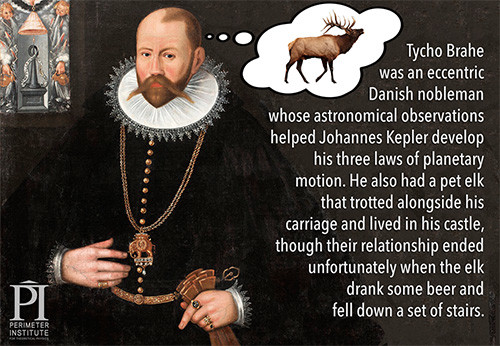
Prancer and the astronomer: Brahe and his pet elk. (Courtesy: Perimeter Institute)
By Tushna Commissariat
Sparks of inspiration come from many sources, but for some of the 20th century’s most well known scientists, their four-legged pets played a key role. From Tesla’s cat “Macak” – his interest in electricity was lit as a child when he noticed sparks generated while he stroked Macak – to Schrödinger’s (real live) dog “Burshie”, these intellectual giants sought the company of pets just as we do and over at the Perimeter Institute’s website, you can learn all about “Great physicists and the pets who inspired them”. My favourite “pet” is of course Tycho Brahe’s infamous elk (you can read about it in the image above). With all of these pets about, its a miracle that a paper wasn’t eaten by a naughty dog or cat!
